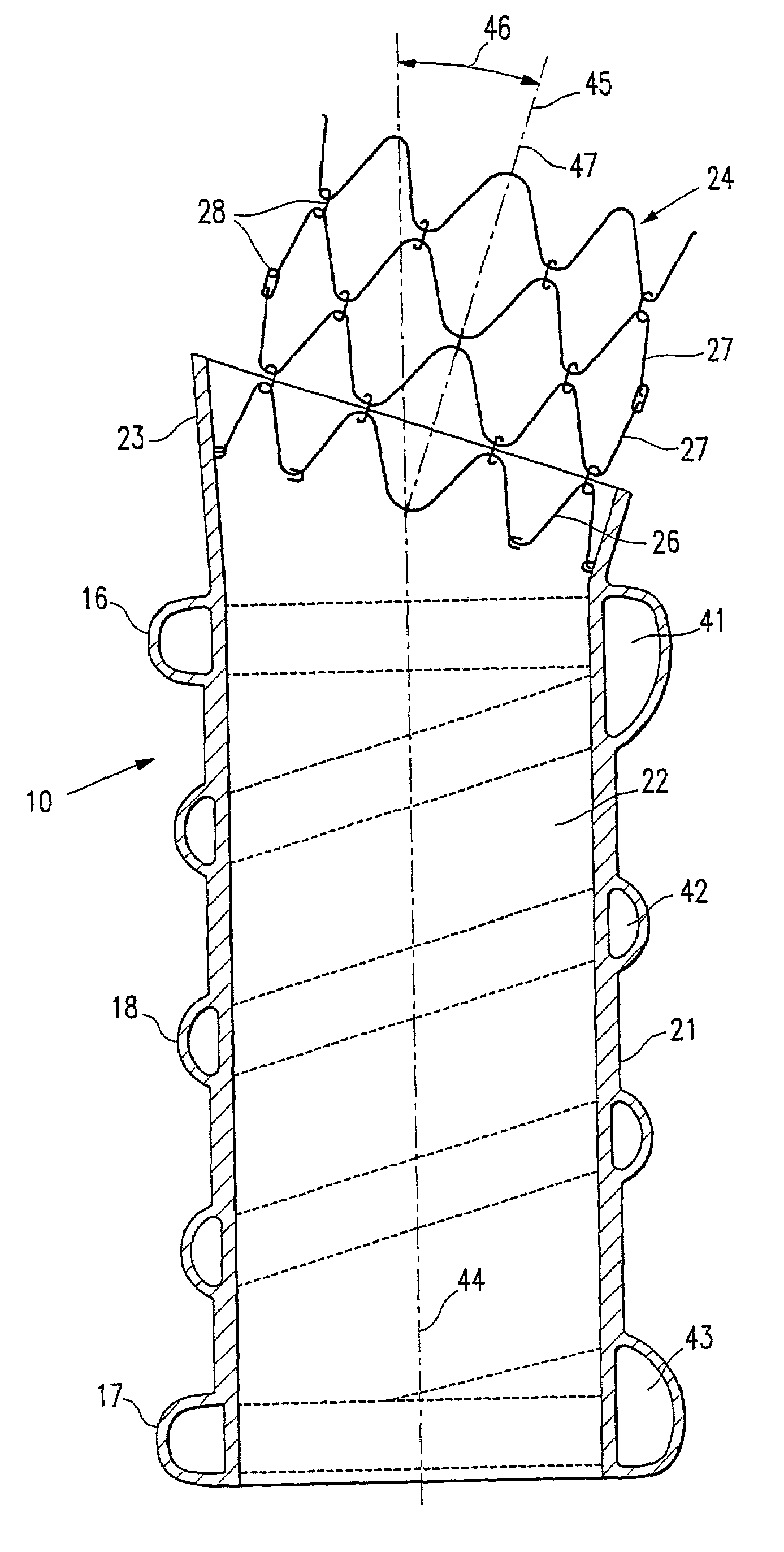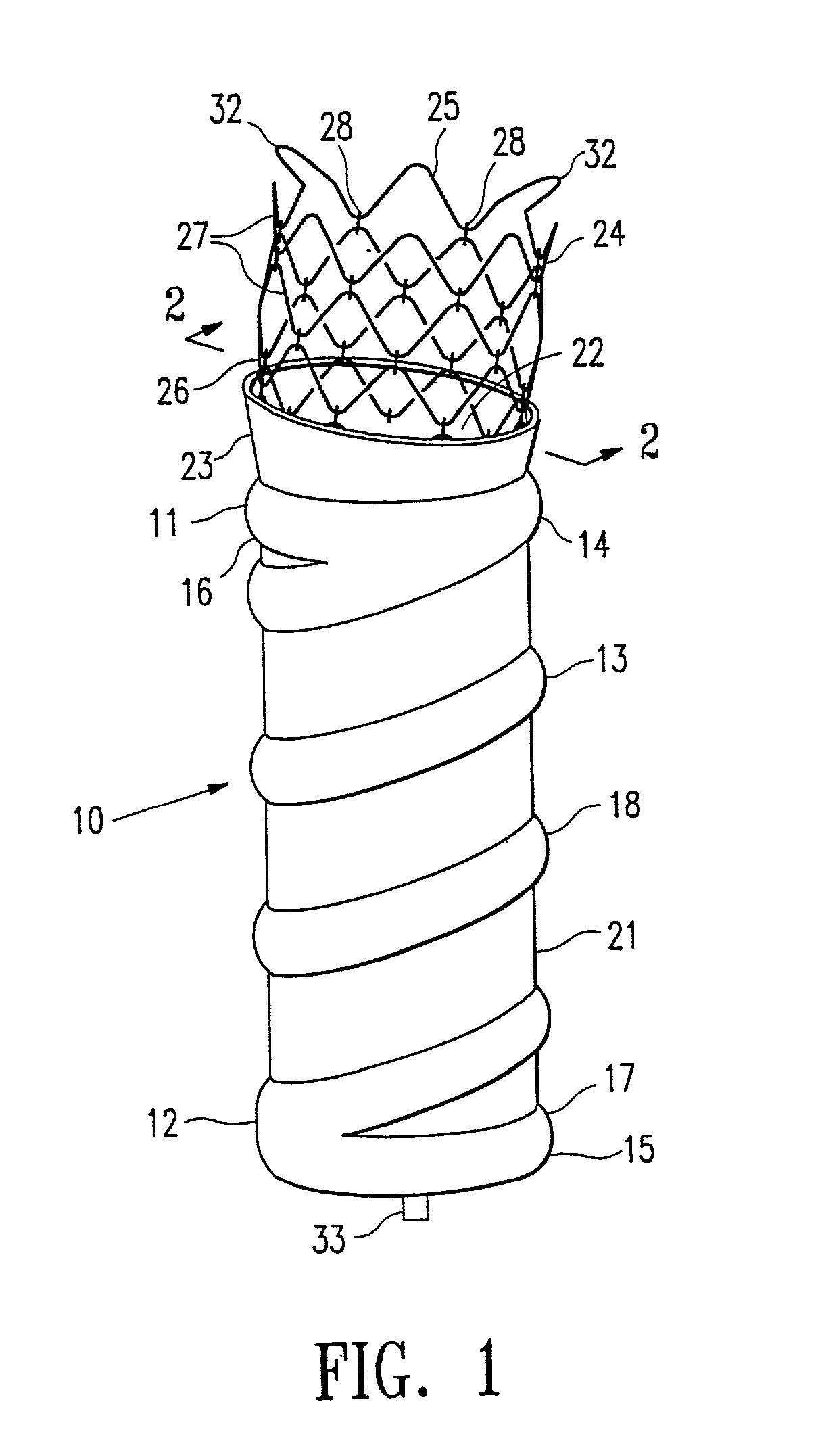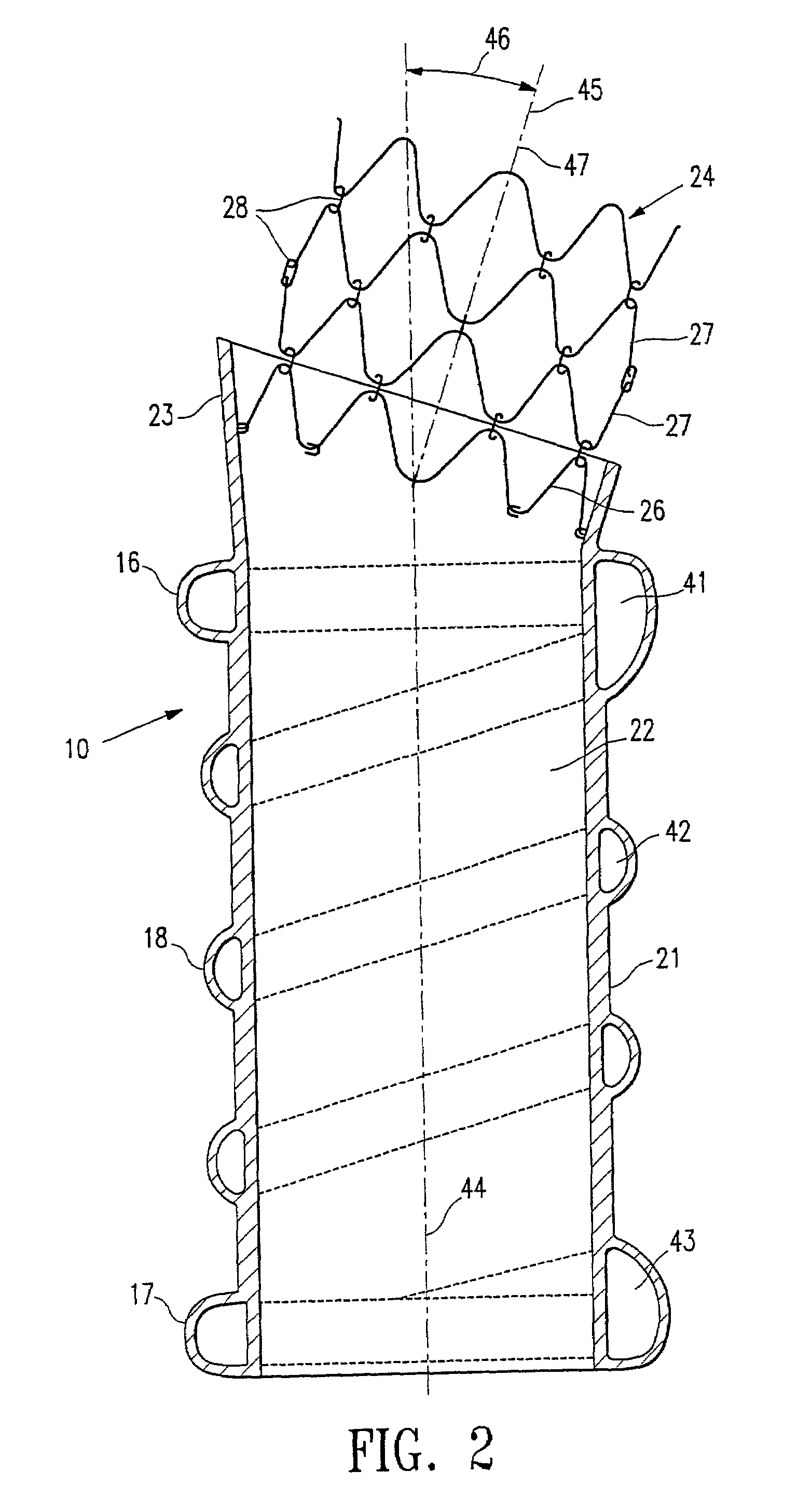Endovascular graft
- Summary
- Abstract
- Description
- Claims
- Application Information
AI Technical Summary
Benefits of technology
Problems solved by technology
Method used
Image
Examples
Embodiment Construction
[0036]FIG. 1 shows a perspective view of an endovascular graft 10 having features of the present invention and having a proximal end 11 and a distal end 12. The graft is supported by an inflatable frame 13 which has a proximal end 14 and a distal end 15 and is shown in its deployed state. The inflatable frame structure 13 has a proximal inflatable cuff 16 at the proximal end 14 and an optional distal inflatable cuff 17 at the distal end 15. The inflatable cuffs 16 and 17 can be annular in shape when deployed, although the cuffs can conform to the shape of the vessel within which they are deployed, and can have an outside diameter or cross sectional dimension of about 10 to about 45 mm, preferably about 16 to about 28 mm. There is at least one elongated inflatable channel 18 disposed between the proximal inflatable cuff 16 and the distal inflatable cuff 17. The inflatable frame 13 can be from about 5 to about 30 cm in length, preferably about 10 to about 20 cm in length. Disposed bet...
PUM
 Login to View More
Login to View More Abstract
Description
Claims
Application Information
 Login to View More
Login to View More - R&D
- Intellectual Property
- Life Sciences
- Materials
- Tech Scout
- Unparalleled Data Quality
- Higher Quality Content
- 60% Fewer Hallucinations
Browse by: Latest US Patents, China's latest patents, Technical Efficacy Thesaurus, Application Domain, Technology Topic, Popular Technical Reports.
© 2025 PatSnap. All rights reserved.Legal|Privacy policy|Modern Slavery Act Transparency Statement|Sitemap|About US| Contact US: help@patsnap.com



